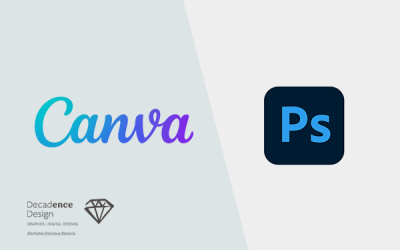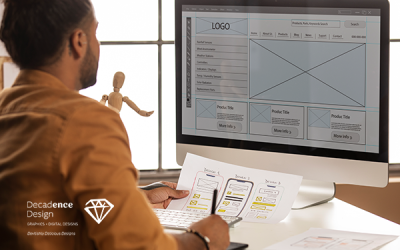Unlocking Sales Potential with Ecommerce Website Design
In the world of ecommerce, Expertly crafted Eecommerce website design can make all the difference between success and failure. Within an ever-growing, competitive online market, where customers have countless options at their fingertips, a visually appealing and user-friendly website can be the key to boosting sales and staying ahead of the competition. In this article, we will explore how good design can significantly impact e-commerce sales and provide tips for creating an effective ecommerce website.
The Power of First Impressions
In the digital realm, first impressions matter just as much as they do in the physical world. When a potential customer lands on your e-commerce website, you have just a few seconds to capture their attention and convince them to stay and explore your products or services. A well-designed website can create a positive first impression, instilling trust and confidence in your brand.
A cluttered, outdated, or poorly designed website, on the other hand, can quickly turn potential customers away. In fact, a study by the Stanford Web Credibility Project found that 75% of consumers judge a company’s credibility based on its website design. This highlights the critical role that design plays in establishing trust and credibility with your audience.
User Experience (UX) is Key
User experience (UX) is at the core of good e-commerce website design. A website that is easy to navigate, loads quickly, and provides a seamless shopping experience will keep visitors engaged and encourage them to make a purchase. Here are some key principles of good UX design for e-commerce websites:
- Intuitive Navigation: Your website’s navigation should be intuitive and user-friendly. Use clear, descriptive labels for categories and product pages, and ensure that visitors can easily find what they are looking for.
- Mobile Responsiveness: With a growing number of consumers shopping on mobile devices, it’s essential to have a responsive design that adapts to different screen sizes. A mobile-friendly website ensures that customers can shop comfortably on any device.
- Fast Loading Speed: Slow-loading pages can drive potential customers away. Optimize your website’s speed by compressing images, reducing unnecessary scripts, and using content delivery networks (CDNs).
- Streamlined Checkout Process: Simplify the checkout process as much as possible. Reducing the number of steps and offering guest checkout options can help prevent cart abandonment.
- High-Quality Images and Descriptions: Use high-resolution images and detailed product descriptions to give customers a clear understanding of what they are purchasing.
Visual Appeal Sells
While functionality and usability are crucial, the visual appeal of your e-commerce website also plays a significant role in boosting sales. Here are some design elements to consider:
- Consistent Branding: Maintain consistent branding elements such as logos, color schemes, and fonts throughout your website. This helps reinforce your brand identity and creates a cohesive user experience.
- Eye-catching Imagery: Use visually appealing images and graphics that showcase your products in the best possible light. High-quality product images can enhance the perceived value of your offerings.
- Whitespace: Don’t overcrowd your website with content and design elements. Adequate whitespace can make your website look clean and organized, allowing users to focus on the most important information.
- Calls to Action (CTAs): Use clear and compelling CTAs that encourage users to take specific actions, such as “Add to Cart,” “Buy Now,” or “Sign Up for Newsletter.”
- Responsive Design: Ensure that your website’s design is adaptable and visually appealing on various devices and screen sizes.
Trust and Security
In the e-commerce world, trust and security are paramount. To boost sales, your website must convey trustworthiness to potential customers. Here’s how you can achieve that:
Secure Payment Options: Offer a variety of secure payment options, and prominently display trust symbols such as SSL certificates and payment logos to reassure customers about the safety of their transactions.
Customer Reviews and Testimonials: Showcase positive customer reviews and testimonials to build social proof and demonstrate the quality and reliability of your products or services.
Transparent Policies: Clearly communicate your shipping, return, and privacy policies. Make it easy for customers to find this information, which helps reduce uncertainty and hesitation during the buying process.
Contact Information: Provide multiple ways for customers to contact you, including a dedicated customer support email or chat option. Accessibility and responsive customer service can go a long way in building trust.
Optimising for SEO
Good website design isn’t just about aesthetics and user experience; it also impacts your search engine ranking. An SEO-friendly design can help improve your visibility in search engine results, driving more organic traffic to your website and potentially increasing sales.
Key elements of SEO-friendly ecommerce design include:
- Optimised Page Speed: As mentioned earlier, fast-loading pages are essential for both user experience and SEO. Google rewards websites that load quickly with higher search rankings.
- Mobile Friendliness: Google prioritizes mobile-friendly websites in its search results, so having a responsive design is crucial for SEO.
- Keyword Optimisation: Incorporate relevant keywords into your product descriptions, headings, and meta tags to improve your website’s search visibility.
- Clean Code: Ensure that your website’s code is clean and well-structured, as this can affect search engine crawling and indexing.
- Quality Content: Regularly update your website with fresh, high-quality content, such as blog posts, articles, and product descriptions. Engaging content can help improve your search rankings and keep visitors coming back.
In the fiercely competitive world of e-commerce, good website design is not just a luxury—it’s a necessity. A well-designed ecommerce website can significantly boost sales by creating positive first impressions, providing an excellent user experience, and instilling trust in your brand.
The Crucial Role of ecommerce Web Design
Whether you’re starting a new ecommerce venture or looking to revamp your existing site, investing in good design is an investment in your business’s success. Remember that web design is an ongoing process, and staying up-to-date with the latest design trends and technologies is essential to maintaining your competitive edge in the e-commerce landscape.
Contact Decadence Design to discuss your website upgrade to boost your brand awareness and sales.
Web Design Agency Singapore
Wikipedia Article: Ecommerce





